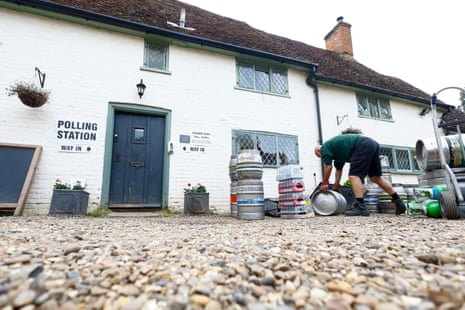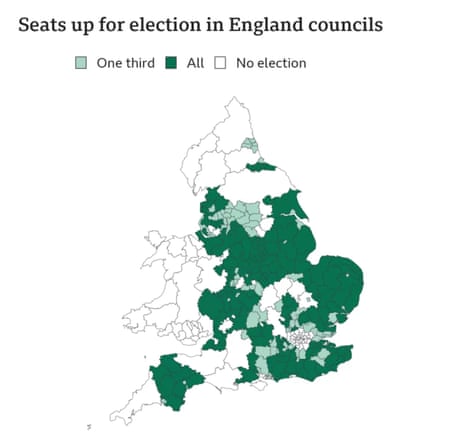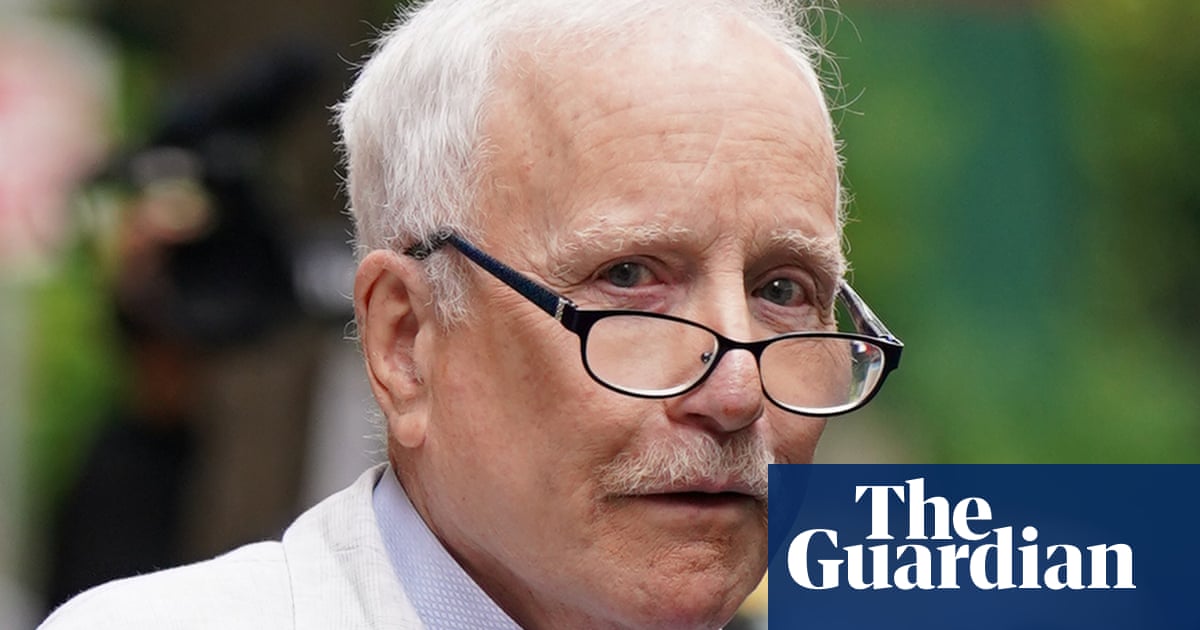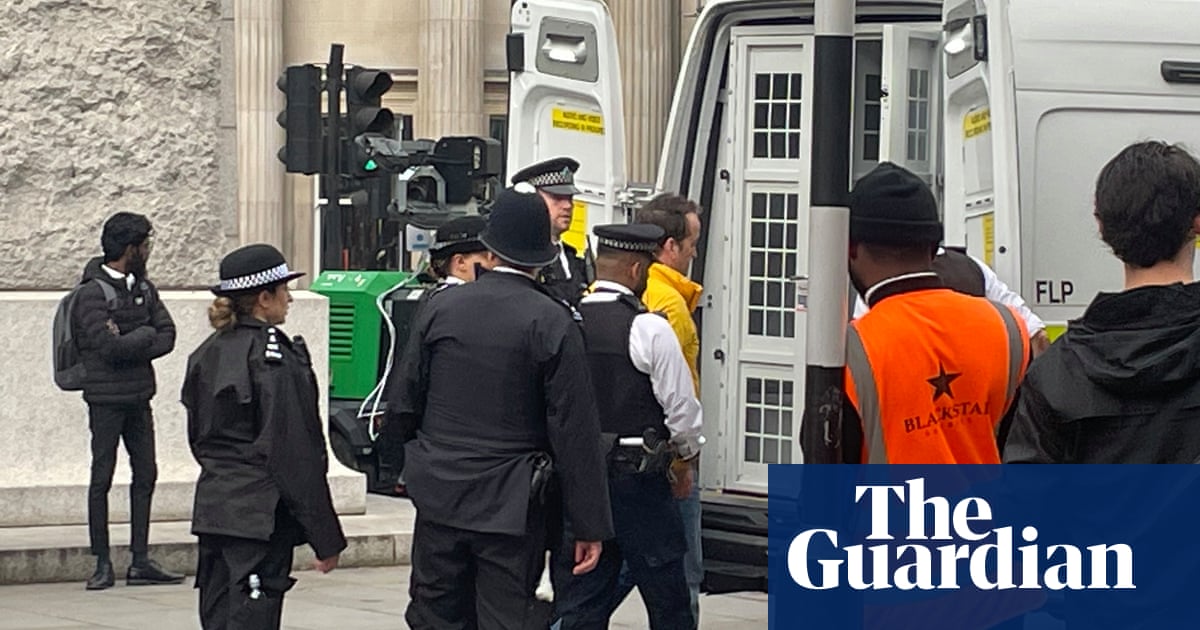How many people might lose right to vote as result of photo ID requirement?
There is considerable uncertainty about the impact of the new law requiring voters to produce photo ID. When the government produced its bill covering this, it published researching suggesting that 2.1 million people across Britain might lack the appropriate ID. The government created a scheme to allow people without photo ID to apply for a voter authority certificate that would perform the same function, but take-up has been minimal.
However, the government has strongly rejected the claim that 2 million people will be disenfranchised. It says many of them either don’t have elections in their area, or might not vote anyway.
In a briefing, David Cowling, who used to be head of political research at the BBC, has set out the figures from the voter ID pilot schemes held in 2019 showing how many people were actually turned away because they did not have the right ID. The chart is here.

Three different versions of voter ID were piloted in 2019, requiring either: a poll card; photo or non-photo ID, or photo ID only. Only Pendle and Woking piloted the photo ID option, which is the version the government chose.
Cowling says that, on the basis of the 0.24% figure for voters turned away who did not return, 21,255 people out of 8.8m voters in the 2019 local elections would have lost the right to vote. He thinks claims that hundreds of thousands of people might lose out are an exaggeration.
The government has said it will publish research into the impact of the new rule in these elections, with a report published by November this year.
Key events

How many people might lose right to vote as result of photo ID requirement?
There is considerable uncertainty about the impact of the new law requiring voters to produce photo ID. When the government produced its bill covering this, it published researching suggesting that 2.1 million people across Britain might lack the appropriate ID. The government created a scheme to allow people without photo ID to apply for a voter authority certificate that would perform the same function, but take-up has been minimal.
However, the government has strongly rejected the claim that 2 million people will be disenfranchised. It says many of them either don’t have elections in their area, or might not vote anyway.
In a briefing, David Cowling, who used to be head of political research at the BBC, has set out the figures from the voter ID pilot schemes held in 2019 showing how many people were actually turned away because they did not have the right ID. The chart is here.

Three different versions of voter ID were piloted in 2019, requiring either: a poll card; photo or non-photo ID, or photo ID only. Only Pendle and Woking piloted the photo ID option, which is the version the government chose.
Cowling says that, on the basis of the 0.24% figure for voters turned away who did not return, 21,255 people out of 8.8m voters in the 2019 local elections would have lost the right to vote. He thinks claims that hundreds of thousands of people might lose out are an exaggeration.
The government has said it will publish research into the impact of the new rule in these elections, with a report published by November this year.
As mentioned earlier, what happens in Scotland will have a huge impact on whether, and how easily, Labour can win a general election. That is one reason why it will be hard to work out what the local elections results tell us about who will be PM in 2025. (See 9.26am.)
Yesterday a poll for Redfield and Wilton Strategies had the SNP on its lowest figure for general election voting intention recorded by any pollster since just after the independence referendum in 2014.
Lowest SNP vote share in any UK GE poll by any pollster since Oct 2014.
Scotland Westminster VI (30 April–2 May):
SNP 35% (-1)
Labour 32% (+1)
Conservative 18% (-1)
Lib Dem 9% (-1)
Green 3% (+1)
Reform 2% (–)
Other 1% (–)
Changes +/- 31 March–1 Aprilhttps://t.co/uHyaRNxGiV pic.twitter.com/mfdscxxCiD
The same poll had Labour ahead of the SNP in voting regional list voting intention for Holyrood, but not constituency voting intention. (Voters in Scotland get two votes, a constituency one and a regional list one, in Holyrood elections.)
SNP leads by 4% in constituency VI for Holyrood.
Holyrood Constituency VI (30 April-2 May):
SNP 36% (-2)
Labour 32% (+4)
Conservatives 18% (–)
Lib Dems 8% (-2)
Greens 2% (-1)
Reform UK 2% (–)
Alba 1% (+1)
Other 0% (-2)
Changes +/- 31 March-1 Aprilhttps://t.co/uHyaRNxGiV pic.twitter.com/cHAhbNxYTV
Labour leads SNP by 2% in regional VI for a Scottish parliamentary election.
Holyrood Regional List VI (30 April-2 May):
Labour 27% (+3)
SNP 25% (-5)
Conservatives 19% (–)
Green 13% (+2)
Lib Dems 10% (-3)
Alba 2% (+2)
Reform UK 2% (–)
Other 2% (–)
Changes +/- 31 March-1 April pic.twitter.com/RHmJGE5yF9


Aubrey Allegretti
We are already seeing reports on social media about people being turned away from polling stations for not having photo ID.
Just been to vote in Drake, and already seeing electoral officials having to explain to a voter why their ID isn’t valid :(
— Fiona Beckman (@FionaBeckman) May 4, 2023Just voted. The guys at the polling station had already turned away someone for not having ID. They recorded it thankfully. Don’t forget your ID when you vote today!
— Luke Piper (@Pipermigration) May 4, 2023Other people are saying the photo ID rule has been an inconvenience, because it stopped them voting when they otherwise would have done.
Walked past polling station on after school drop off. But I don’t have my ID with me so can’t vote.
I’m lucky to have a passport & driving license at home & can come back later. But I’m concerned about those who don’t, & those who might be turned away and won’t go back. pic.twitter.com/VoHMLqiduH
And Kylie MacLellan, a Reuters journalist, wonders how many ID documents are going to be left behind in polling stations today.
When I went into the polling booth to vote this morning I found a driving license a previous voter had left behind. How many people are going to remember their ID today and then promptly lose it in the process of voting? 🤦♀️
— Kylie MacLellan (@kyliemaclellan) May 4, 2023A reminder: please don’t post anything in the comments below the line about how you voted. That is because, under the Representation of the People Act 1983, we are not allowed to publish that information. The law is intended to stop people publishing exit polls on the day that could sway voting behaviour while the polls are still open, but the ban covers publication of “any statement relating to the way in which voters have voted at the election where that statement is (or might reasonably be taken to be) based on information given by voters after they have voted”, and so in theory even an innocuous “I voted for X” is covered.
Tell us about using voter ID in the local elections in England
Today, for the first time, voters will have to present photo ID if they want to vote. The system has been piloted, but it is now law for all general elections in the UK, as well as for all local elections in England.
We would like to hear from readers about their experience of the new rules. Did you know about the rule? Were you turned away? If so, do you return.
There is a callout form here where you can tell us about your experience of this.
Sunak warns Tories to prepare for 'hard' night in local elections because of 'box set drama' under Johnson and Truss
Good morning. It is local elections day in England. More than 8,000 council seats are up for grabs, and this is the biggest set of elections in the four-year local elections cycle, and the biggest electoral test for the parties between now and the general elections. There are no elections in London, but roughly 70% of voters in England do get a vote. Here is a map of the places involved.

The Conservatives are 16 points behind Labour in the latest Politico poll of polls and they are braced for a bad night. Last night, in a speech to an Onward thinktank event, Rishi Sunak said it would be a “hard” night for the party. He blamed his predecessors, Boris Johnson and Liz Truss, saying that Tory councillors would lose their seats because of the “box set” psychodrama that enveloped the party last year. He said:
We should be prepared that tomorrow night is going to be hard for us.
Good councillors will lose their seats because of all that has happened over the past year.
I’ve only been prime minister for six months but I do believe we’re making good progress. Just think about where we were then and where we are now.
Our economy is in much better shape. Our politics doesn’t feel like a box set drama any more. And our friends and our allies know that we are back.
What everyone will want to know, of course, is whether the results tomorrow mean Labour is on course to win a general election, but that is hard to assess for at least three reasons.
1) The places voting today aren’t representative of the country as a whole. By comparing how the vote share has changed in particular wards, they produce figures for what the share of the vote would have been if there had been local elections in every part of Britain. Confusingly, there are two versions of this figure. Prof John Curtice produces a “projected national share” (PNS) for the BBC. And Prof Colin Rallings and Prof Michael Thrasher produce a “national equivalent vote” (NEV) which is published in the Sunday Times, but also informs the Sky News analysis. These figures tends to be similar, and they illustrate the same trend, but they are not identical.
2) Even when you have the PNS and NEV figures, they only show how people across Britain as a whole would have voted in local elections, not in a general election. A party is never going to win in one set of elections if it is doing badly in the other, but people don’t always vote the same way in local elections and general elections.
3) Today’s elections will only produce data for England. What happens at the next general election will depend hugely on whether or not Labour can gain 20-odd seats from the SNP, and that is hard to tell because the situation in Scotland is in flux.
There will be a lot more on this in our results blog tomorrow.
Here is our preview story on the elections from Peter Walker and Aubrey Allegretti.
And Archie Bland has a guide to what would constitute a good or bad result for the parties in his First Edition briefing.
The House of Commons is not sitting today, and there will be no party politics on the BBC or Sky News, and so the agenda will be light. But we will be looking out for reports as to whether the new photo ID requirements create problems at polling stations. And at 12pm Humza Yousaf is taking first minister’s questions at Holyrood.
If you want to contact me, do try the new “send us a message” feature. You’ll see it just below the byline – on the left of the screen, if you are reading on a PC or a laptop. (It is not available on the app yet.) This is for people who want to message me directly. I find it very useful when people message to point out errors (even typos – no mistake is too small to correct). Often I find your questions very interesting too. I can’t promise to reply to them all, but I will try to reply to as many as I can, either in the comments below the line, privately (if you leave an email address and that seems more appropriate), or in the main blog, if I think it is a topic of wide interest.

 1 year ago
91
1 year ago
91










 English (US)
English (US)